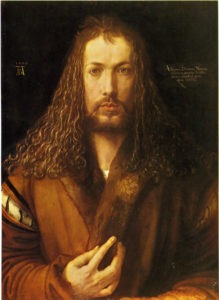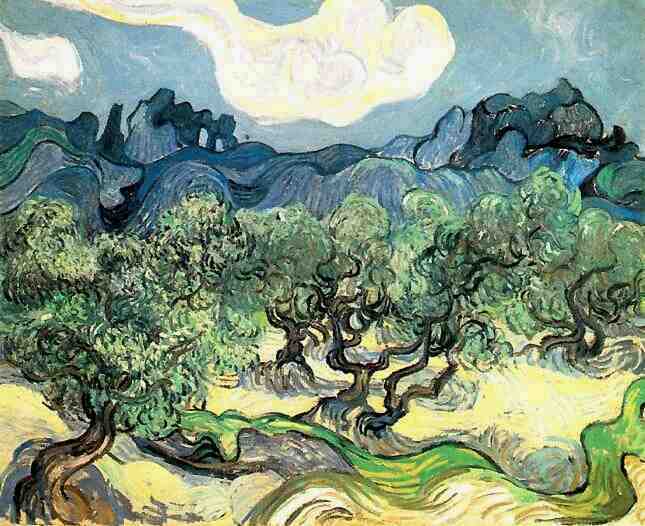
Franz Marc’s Winterschläfer
In the spirit of rebirth an excerpt from my research about Franz Marc’s visualization of a kind of pantheistic utopia, followed by an introduction and explanation about this new website and some other breaking German Modernism news.
§ § §
Though it doesn’t seem as if these two images appended here could possibly be related, they do have a commonality – the figures are in a state of private reverie that is between sleep and wakefulness.
Franz Marc himself charaterized his mode of trying to perceive as the animal as if in a state of somnambulism, partly conscious yet also given over to the transformative experience of being another, in this dream-like state. The animals to Marc possessed in their purity a sort of natural extraconsciousness. His work has numerous examples of figures in such a “sleepwalking” state, corresponding to the posture of animals, and also people, in a relaxed posture reclining into a receptive earth. This natural somnambulism blurred what was conventionally taken to be a distinction between people and animals, that animals are innate and instinctive, whereas humans can return to this state only in dreams.
In 1911, Marc had written an interesting personal aside in his journal:
[Können wir uns ein Bild machen, wie wohl Tiere uns und die Natur sehen?]
Gibt es für Künstler eine geheimnisvollere Idee als die [Vorstellung], wie sich wohl die Natur in dem Auge eines Tieres spiegelt? Wie sieht ein Pferd die Welt oder ein Adler, ein Reh oder ein Hund? Wie armselig, [ja] seelenlos ist unsre [Gewohnheit] Konvention, Tiere in eine Landschaft zu setzen, die unsren Augen zugehört statt uns in die Seele des Tieres zu versenken, [daß wir das seinen Blick Weltbild] um dessen Bilderkreis zu erraten.
[Diese Betrachtung soll keine müßige causerie sein, sondern uns zu den Quellen der Kunst führen.]1
We can see this interest in the perception of animals reflected not just in Marc’s belief in the inherent Beseeltheit [2] of animals but also in his knowledge of contemporary zoology research taking place at the end of the 19th and beginning of the 20th centuries, for example, the writings of Wilhelm Bölsche on plant and animal taxonomy[3] and more clinical examinations, such as studies about how the retinae of insects’ eyes functioned.[4]
Thus what we think of now as “the question of the animal” was under Marc’s consideration in suprisingly contemporary terms, and should not be considered merely an outflow of his private, sentimental feelings about his pets. Like Kandinsky, Marc was curious as to whether there was a tangible basis for their claims that there existed unseen dimension in the regular order of the world but which had become invisible to callous, spiritually deprived humans.
The sketch, Liegender Hund (Russi), (and note also the title) shows that even before he began to wrangle with the problem of color, Marc was busy practicing making copies and models for his later paintings, sketches which nonetheless stood as discrete works for Marc, since, in his somewhat haphazard fashion, he also named and numbered them.
Unlike Paul Gauguin, from whom he certainly drew upon for ideas about content and color, to Marc, nude women in a natural setting were not excuses for a prurient gaze but rather these women, like Marc’s contemplative animals, symbolized innocence and purity, and were associated with the reclamation of paradise. Dreaming animals and people stood for a somnambulant state marking a kind of emotional perception that synaesthetically included auratic impressions and warmth.[5] In his painting Der Traum in which a “Wilden” woman sits cross-legged. Marc blends this image of longing for an original paradise with the European idea of paradise, where the wild lion, like that of St. Jerome, lives in peaceful harmony with horses and humans. Marc’s Animalisierung is in evidence here. Like “wild” people, animals as envisaged by Marc display a natural attunement to the spheres, having been born directly into their instincts, which modern humans – expelled from paradise – have lost.
(more…)

